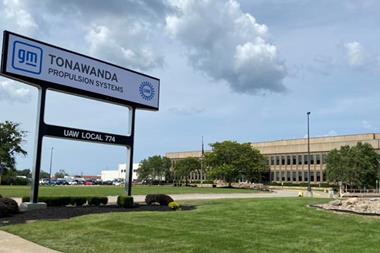
Periodically, Ford decides that it needs a non-automotive leader to effect major change as market shifts demand new ways of running the giant corporation. Back in 2006, it recruited Alan Mullaly from Boeing, whose solution to the OEM’s problems at the time was the One Ford strategy. His successor, in 2014, was a long-time Ford man, Mark Fields, but with Ford’s financial performance failing to impress shareholders, Fields was ousted after less than three years and Jim Hackett, a renowned turnaround specialist, arrived in May 2017. Not long after he arrived, he told financial market analysts that he would look at Ford through five lenses: revenue, fitness, capital, innovation and culture.
Hackett has spent four months in detailed analysis of Ford’s operations and in early October announced its new strategy to investors. Fitness is really the key to Hackett’s strategy for Ford; getting the company fit to do business in a rapidly changing world. As such, Ford plans to cut $14 billion from its cost base, $10 billion from materials and $4 billion from engineering, the latter through using more common parts across its model range (though this is hardly revolutionary, as common platforms and parts are used by all car companies across the world).
More money, $7 billion, will be allocated to SUVs and trucks, with less for cars. In a move which will not go down well in the White House, Hackett confirmed earlier reports that the new Ford Focus will not be made in the US, or even North America, but rather in China. In addition to focusing on SUVs and trucks, Ford will accelerate its electrification efforts; a dedicated electrification unit will be established, tasked with doing a great deal more than delivering the 13 electric and hybrid models already promised for the next five years. Partnerships with other companies are something which Ford has largely eschewed in recent times, but there are now plans for an alliance with Mahindra in India, with Zoyte in China and with Lyft and, bizarrely, Domino’s Pizza to develop new forms of delivery services.
Finally, and of specific interest to readers of AMS, Ford is going to look at different ways of improving its manufacturing efficiency. This is will involve a significant reduction in the number of options offered, to simplify the manufacturing process and the supporting purchasing and engineering functions. For example, on the next Escape SUV (Kuga in Europe) there will be a ten-fold reduction in the number of orderable combinations, while the Fusion sedan will see a cut from 35,000 combinations on the current model to just 96 on the new one. Furthermore, it will look to reuse more manufacturing equipment on model changes; the inference is that Hackett thinks Ford has installed too much new equipment for new models in the recent past. For the next F-150 truck, Ford’s bestselling model worldwide and a major profit generator, 90% of the existing manufacturing equipment will be used for producing the next model.
It remains to be seen how revolutionary the changes Hackett plans will actually be; vehicle companies have been trying to adopt common platforms for many years, with varying degrees of success. Ford, it would seem, has been behind the curve for some time, but is Hackett's strategy going to do much more than enable the company to catch up with the competition? Overtaking nimbler competitors and taking a lead may have to wait.






































